The Cemetery for the Guillotined Victims of the Terror
The Picpus Cemetery is not listed among the most famous cemeteries in Paris. However, it’s a beautiful place to see, with a thrilling history. For us, le Cimitière de Picpus is a must-see of Paris, especially if you are an American visiting Paris.
This tranquil place located in the neighborhood of Picpus, in the 12th Arrondissement of Paris, is the final resting place of 1,306 headless bodies who lost their lives at the guillotine set up in former Place du Trône-Renversé (now called Place de la Nation).
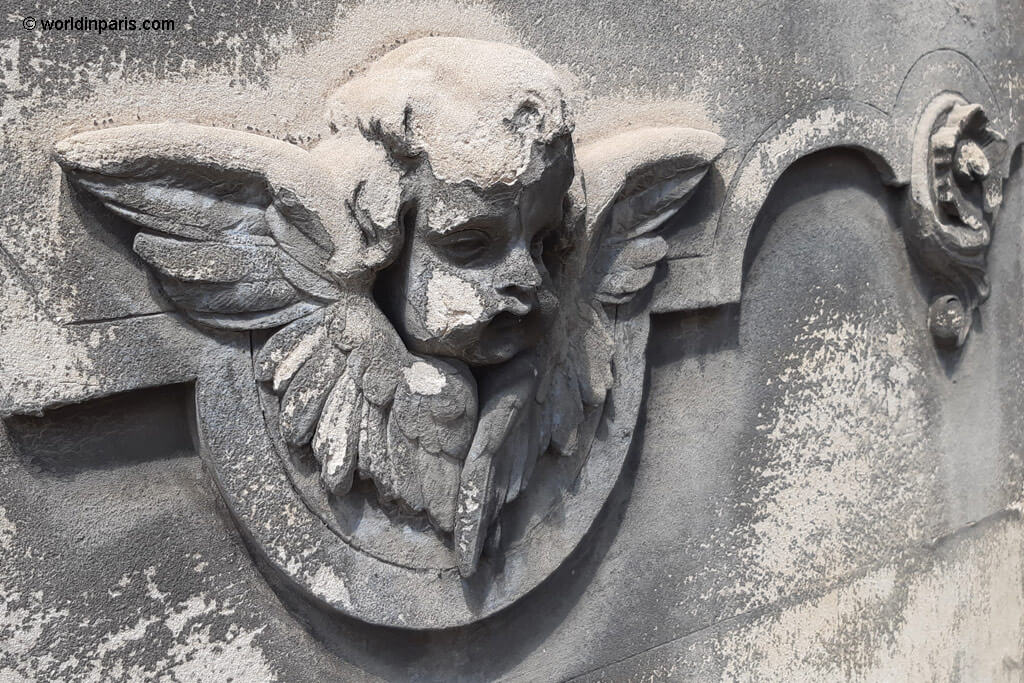
The Picpus Cemetery is one of our favorite secret places in Paris. Click here for the list of the most beautiful hidden gems in Paris.

The Reign of Terror (1793–1794)
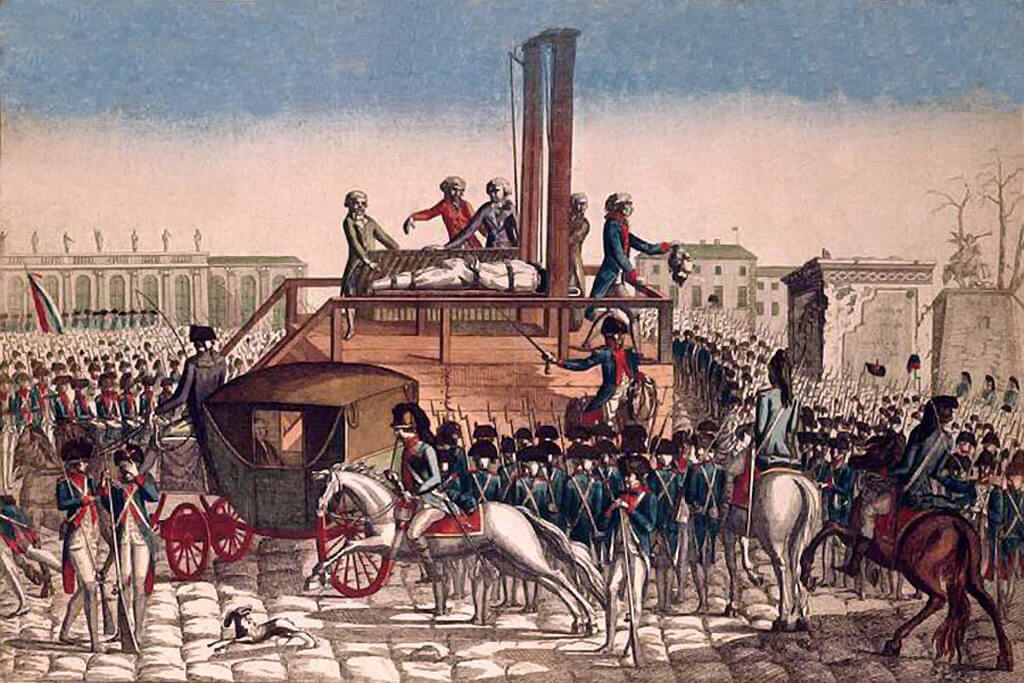
King Louis XVI’s execution in December of 1792 left the country without a clear government, followed by food shortages, riots, and a backlash against the revolutionaries. In June 1793, the French Revolution dissolved into chaos, into a period of ‘Terreur’ (The Great Terror) launched under Robespierre. The country saw the execution of an estimated 16,000-40,000 ‘enemies of the revolution’, and guillotines were set up in major squares in Paris, hosting as many as 55 executions in a day.
Between 14 June and 27 July 1794, 1,306 people from different social backgrounds, aged between 16 and 85, were executed by the guillotine in Place du Thrône Renversé. They were nearly all condemned on petty, absurd, or imaginary crimes.
The Origins of Picpus Cemetery, Paris
In the summer of 1794, when Place du Trône-Renversé had many headless bodies baking in the sun, it was necessary to find a place to dump them. At that time, the current Picpus Cemetery grounds were occupied by the Convent of Chanoinesses de St Augustin. The convent’s garden turned to be a convenient and quick option to get rid of the corpses, as it was located just a few minutes away from the guillotine. The convent was requisitioned, and the headless corpses were buried in two hastily dug pits in the garden.
The massacre only stopped on 27 July (9 Thermidor according to the Revolutionary Calendar), when the main instigator of these horrors, Maximilien de Robespierre, was himself condemned and guillotined by his partisans, scared of becoming the next victims.
Today Picpus Cemetery is a private cemetery, and only descendants of those victims can be buried in this place. Picpus Cemetery is a tranquil place far from the city’s hustle and bustle, perfect for a short rest under the shade of its beautiful trees or to meditate.
The Visit
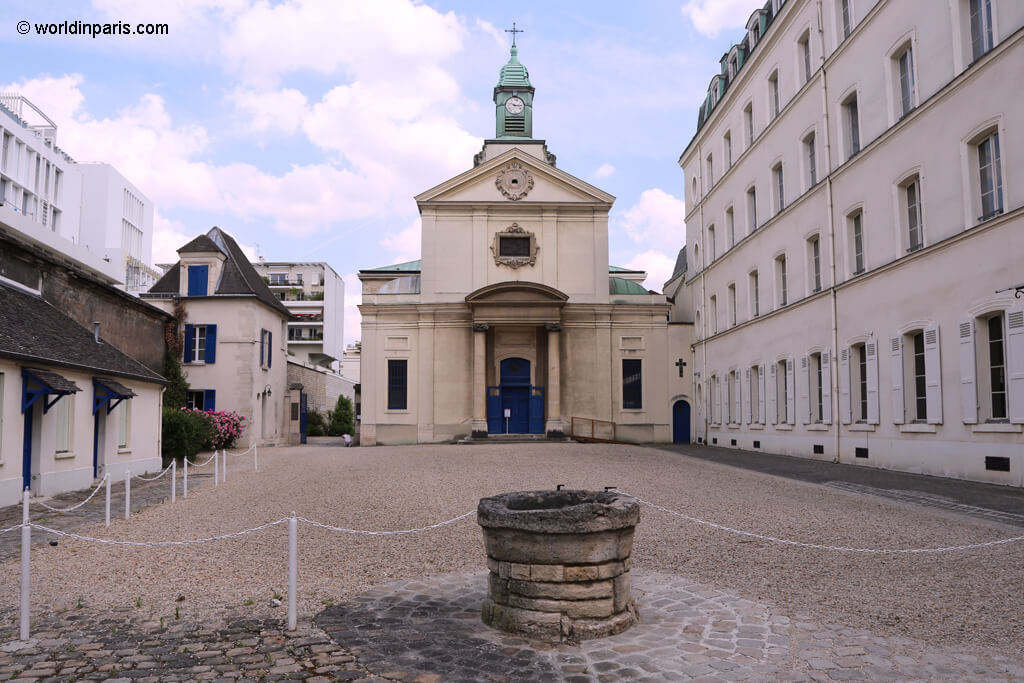
The entrance of the cemetery is at 35 rue de Picpus. After crossing the first iron gate, there is the first courtyard with the Notre-Dame-de-la-Paix Chapel that pays homage to the guillotine victims.
Just in front of the chapel, there’s a well 28-meter deep. The house next to the chapel, on the left, was built during the reign of King Louis XIII. The cemetery is behind the chapel, hidden by a second fence.
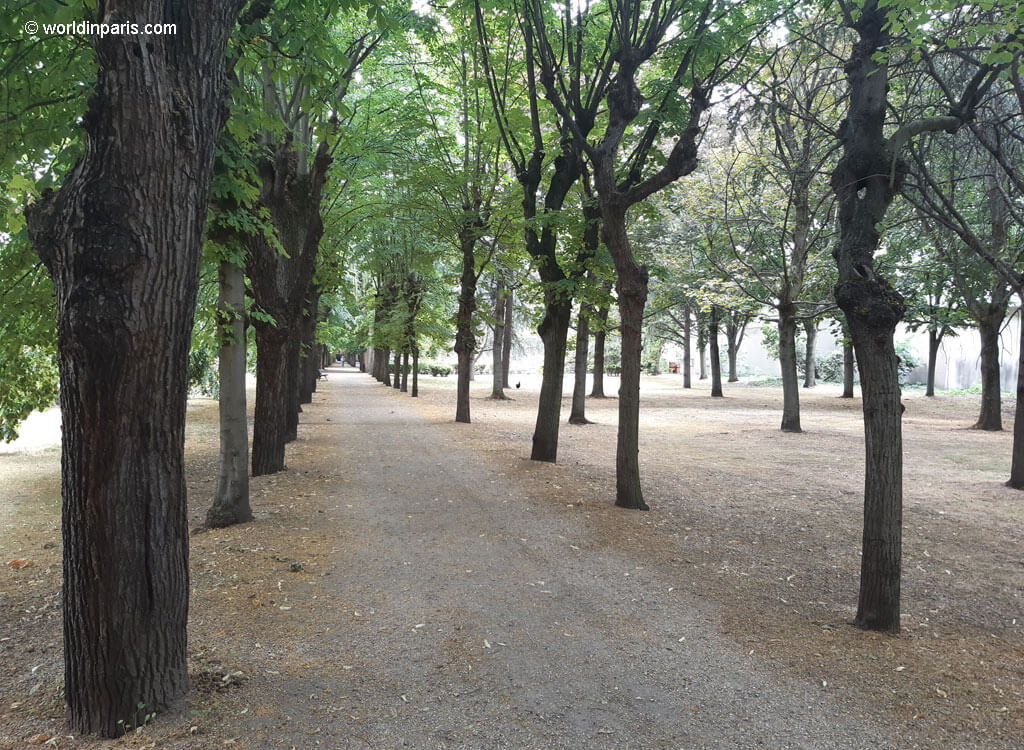
After the second iron door, we come out onto a small, wooded area. On the other side of the garden, there’s a superb alley of weeping trees, the perfect oasis for a warm summer day like today. We follow this beautiful alley. Behind the ivy-covered wall lies the cemetery itself.
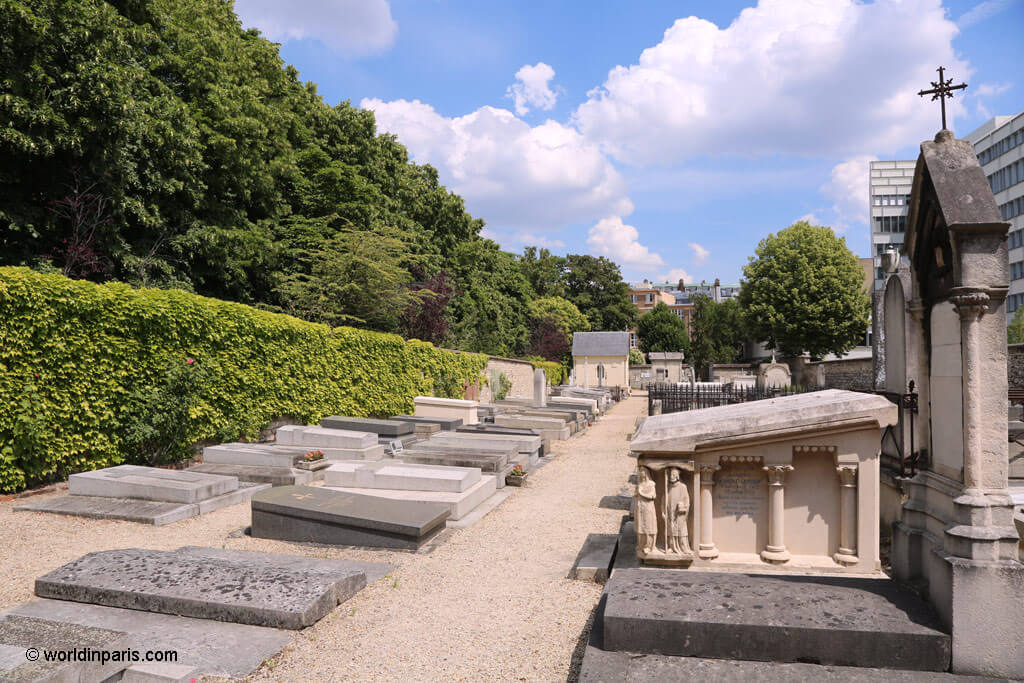
Only the descendants of those victims can be buried at Picpus Cemetery. On the graves, we can read the names of many counts, marquis, and dukes.
The mass graves from the French Revolution are located at the back of this cemetery, behind another blue iron gate. We cannot access this area, but from the door, we can see a glass plate, with these simple words: ‘Pit N ° 2 – 304 martyrs decapitated Place du Trône in June 1794 rest here waiting for the Resurrection.’
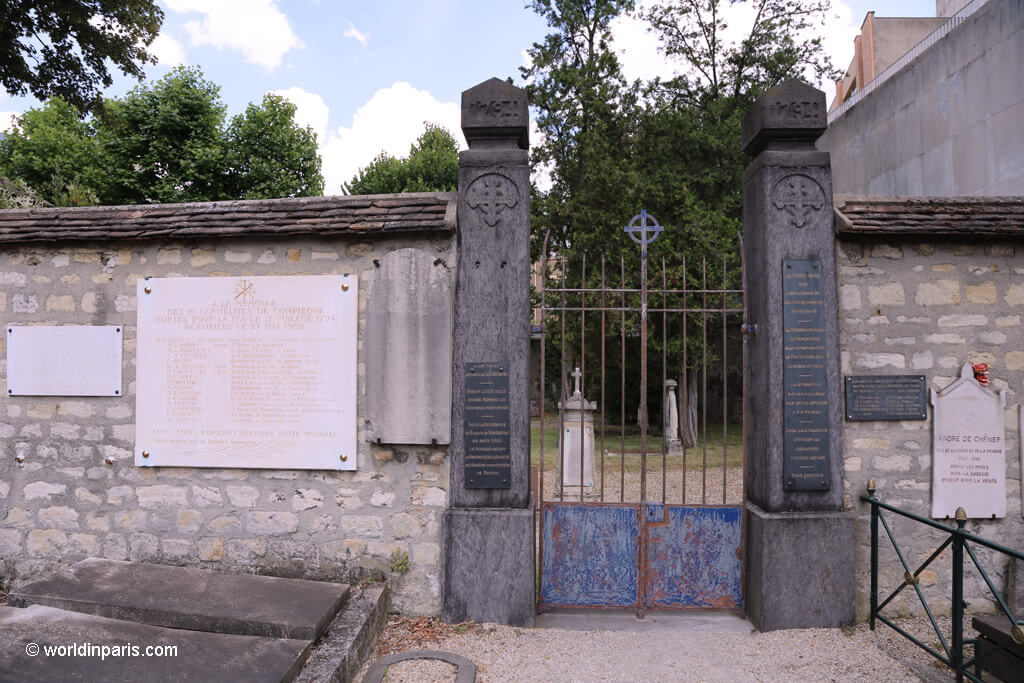
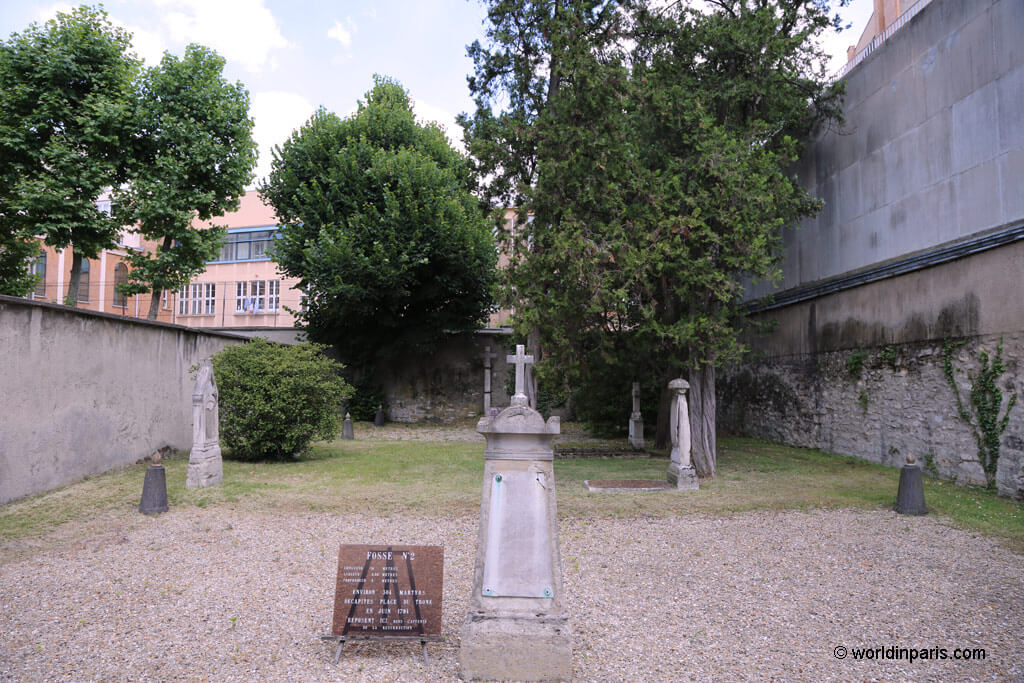
Marquis de Lafayette’s Grave
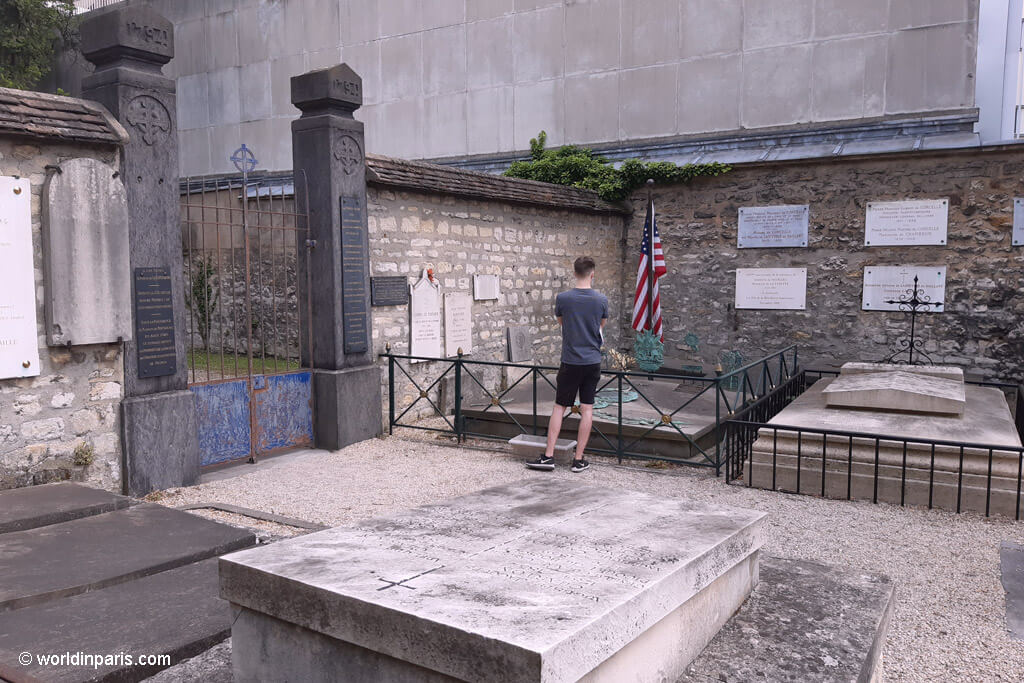
In the cemetery for the victims’ families, near the mass graves, there is the Marquis de Lafayette grave. He rests beside his wife, who lost her grandmother, mother, and sister to the guillotine.
Marquis de Lafayette (1757-1834) was a Frenchman who fought in the American Revolutionary War under George Washington. In the French Revolution, he was part of the National Assembly, and he drafted the Déclaration des Droits de l’Homme et du Citoyen (Declaration of the Rights of Man and the Citizen). Marquis de Lafayette outlived both Revolutions (just barely) and dedicated his last years to traveling widely as a statesman. He died in Paris in 1834 and was buried at the Cimetière de Picpus under soil from Bunker Hill in Boston – where the famous battle of Bunker Hill was fought.
“Lafayette, we are here“
Marquis de Lafayette’s tomb is a special place for Americans, and an American flag permanently marks the Marquis’ grave. Three months after the United States entered the First World War, on 4 July 1917, U.S. Army Colonel Charles E. Stanton visited the tomb of General de Lafayette, placing the American flag on his grave and uttering the words:
‘America has joined forces with the Allied Powers, and what we have of blood and treasure are yours. Therefore it is that with loving pride, we drape the colors in tribute of respect to this citizen of your great republic. And here and now, in the presence of the illustrious dead, we pledge our hearts and our honor in carrying this war to a successful issue, Lafayette, we are here.’
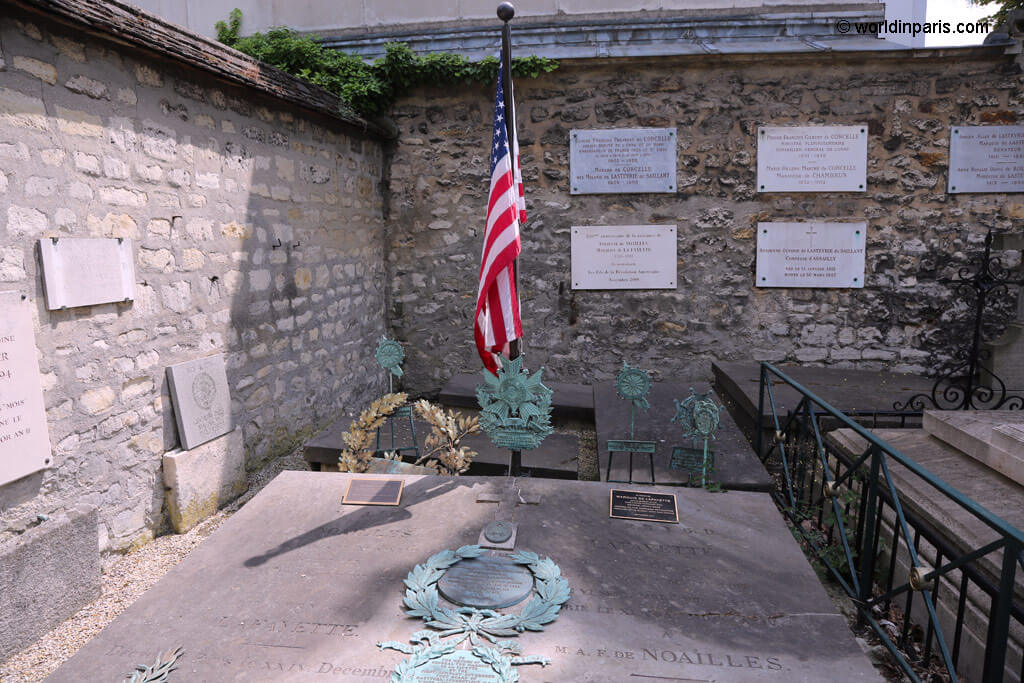
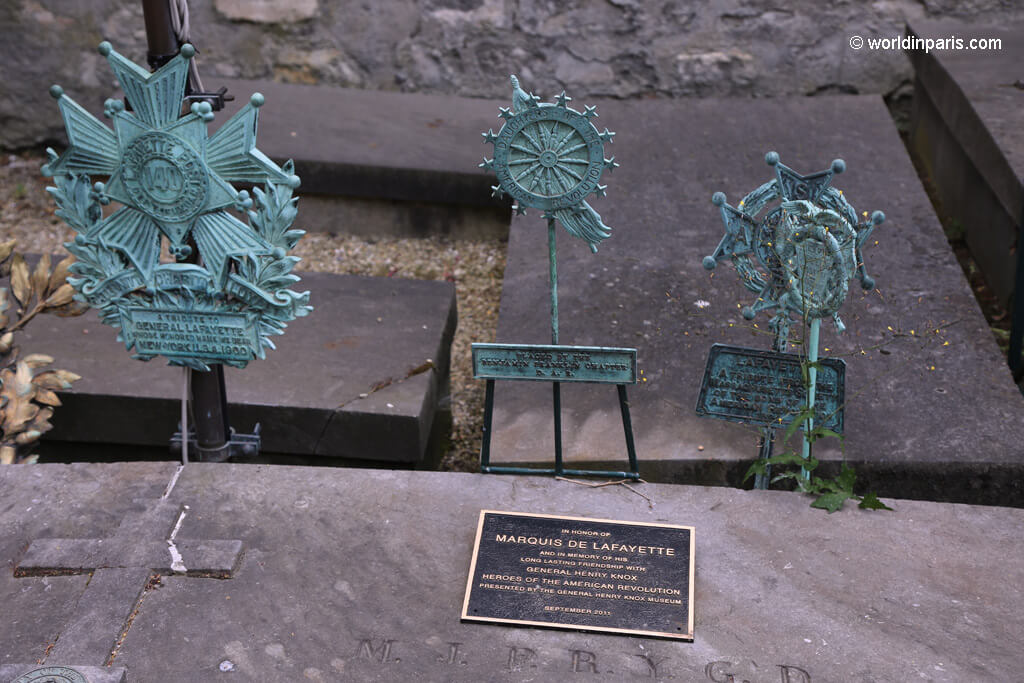
According to legend, during the Occupation, the Germans never dared to touch the American flag on Marquis de Lafayette’s tomb, despite their state of war with the United States.
Every 4 July, the anniversary of the United States’ Independence, the American flag on the Marquis de Lafayette tomb is renewed, courtesy of the local chapter of the Daughters of the American Revolution (DAR). The American ambassador, representatives of the City of Paris, the Senate, and the local chapter of the Daughters of the American Revolution come to pay tribute to him.
TIP: Read more about American History in Paris
Other Interesting Remains in Picpus Cemetery
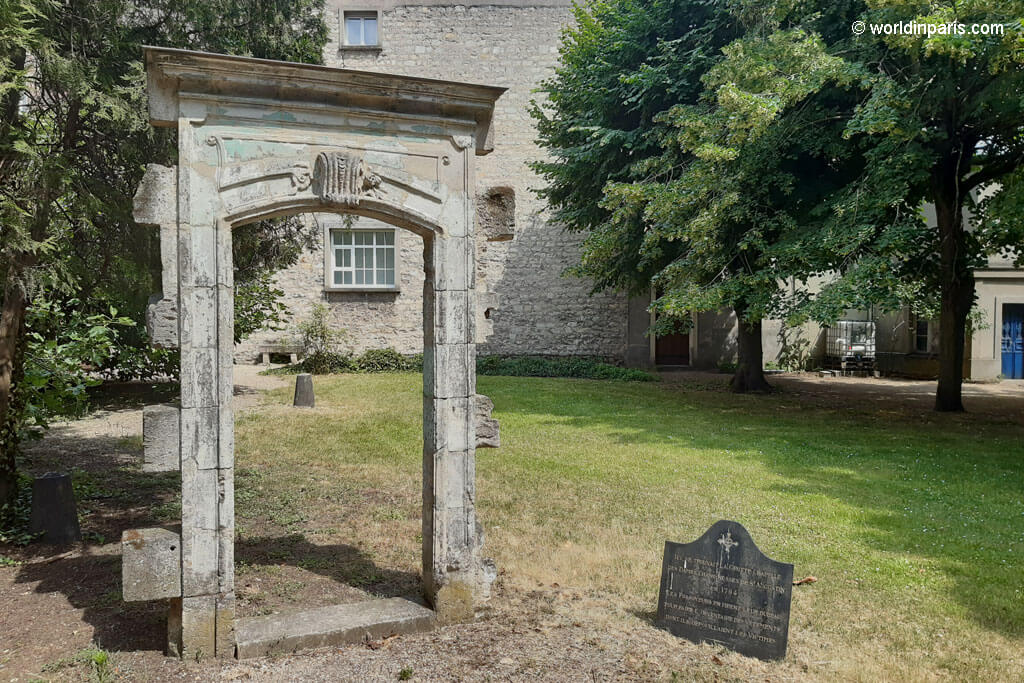
Back to the garden, we can see other remains of the French Revolution, such as the stone door of an old chapel that belonged to the convent. The gravediggers used this chapel to undress the victims and keep an inventory of their clothes and personal belongings.
Behind this stone door, we can see the door used by the carts carrying the bodies. Finally, between these two doors, four border stones mark the site of a third mass grave that was never used.
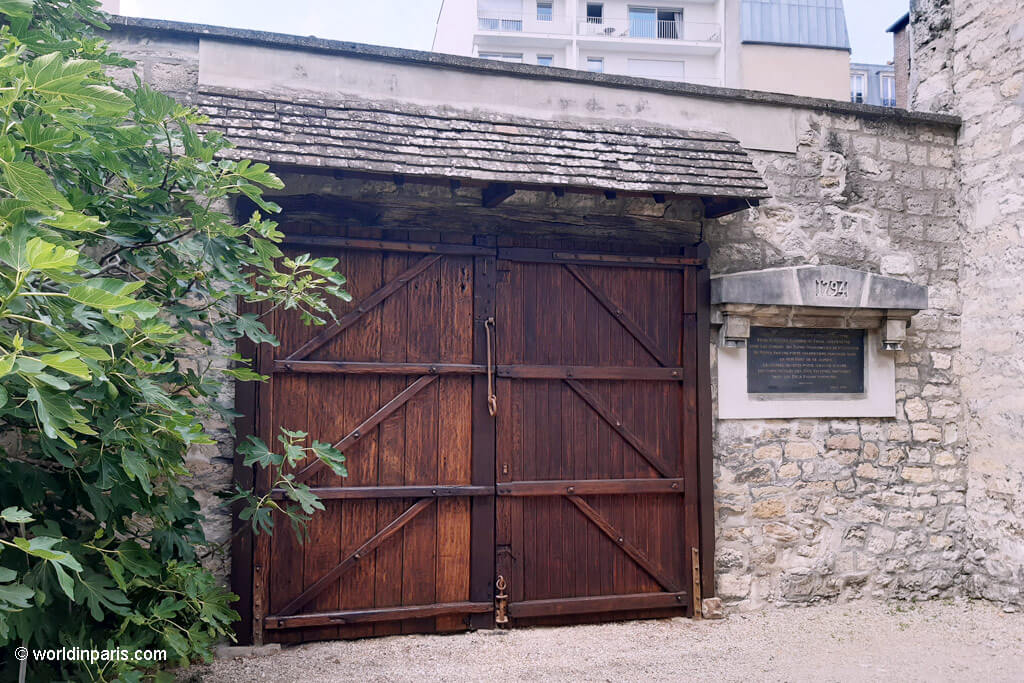
Notre Dame de la Paix Chapel
Before leaving the cemetery, we enter the Notre-Dame-de-la-Paix Chapel for a short visit.
The interior of the Chapel is very sober. There’s a beautiful carved wooden Christ in the choir, and on the sides, the names of the 1,306 victims (name, age, and profession) are engraved by order of arrival. For the dates, both the Gregorian Calendar and the Revolutionary Calendar are used.
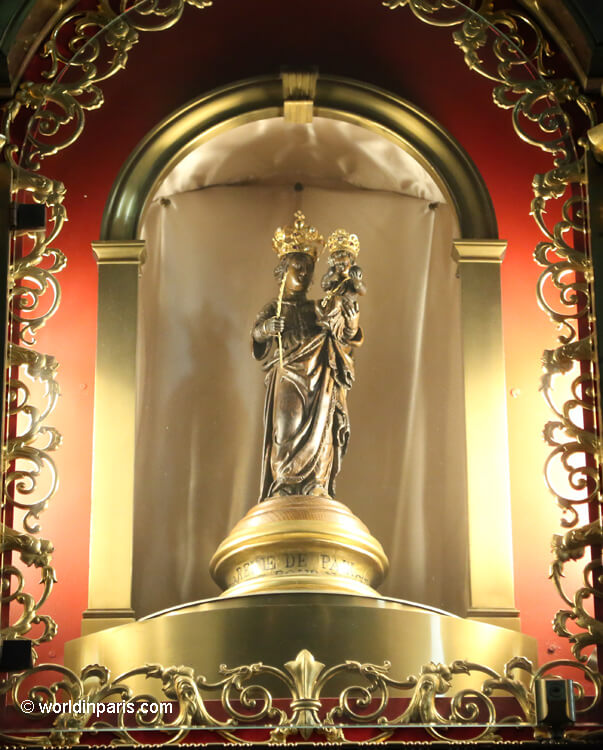
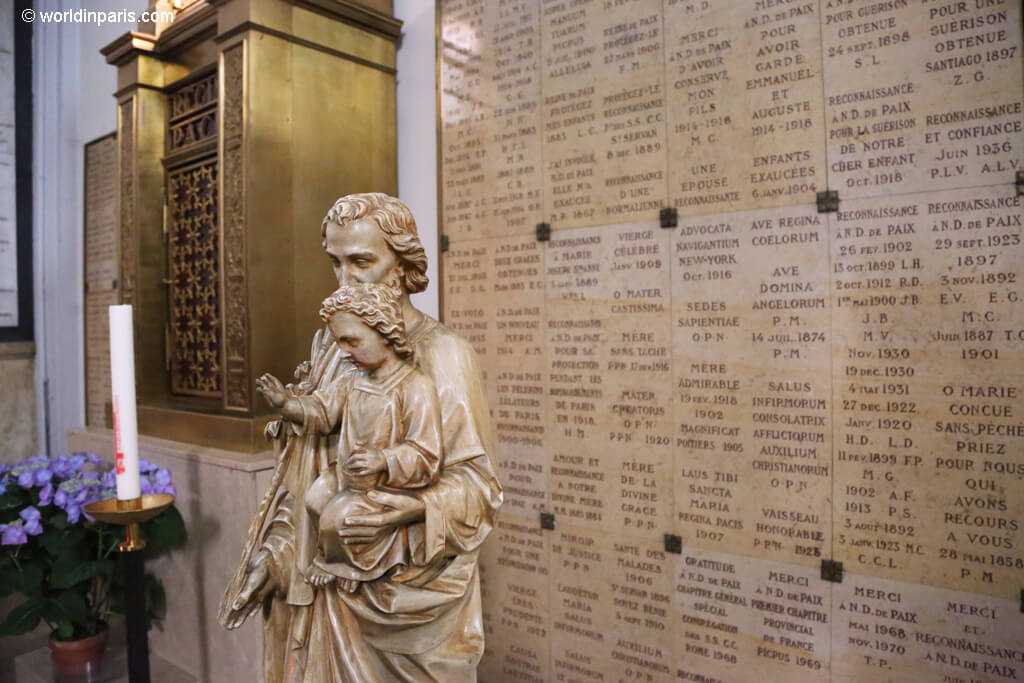
On the Chapel’s left side, we can see Notre Dame de la Paix, a 33 cm high dark brown wooden statue finely carved in Renaissance style. Notre Dame de la Paix dates from 1530, and it belonged to the Joyeuse family, established in Languedoc. She was one of the most revered Madonnas in Paris until the Revolution, and on the wall, you can see many ex-votos from the 19th and 20th centuries.
Cimitière de Picpus – Info & Tips
The cemetery is open from Monday to Saturday from 2 p.m. to 4 p.m. in winter and from 2 p.m. to 6 p.m. in summer. The entrance fee is 2 €.
The entrance is at 35, rue de Picpus. The closest metro station is Picpus, line 6.
Unfortunately, it seems that today the 4 of July ceremony at Lafayette’s grave is falling into disuse. The Guardian tells us that only a few people came in the last years, and if the 4 of July falls on the weekend, they come before or after that day.

